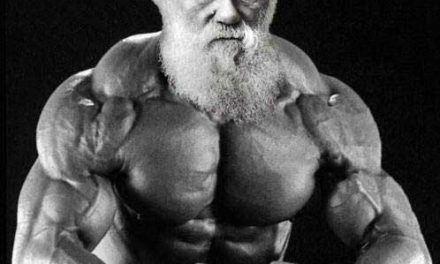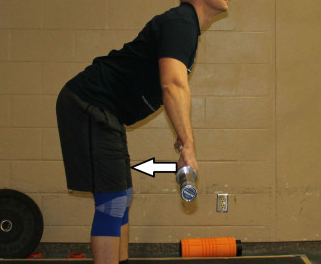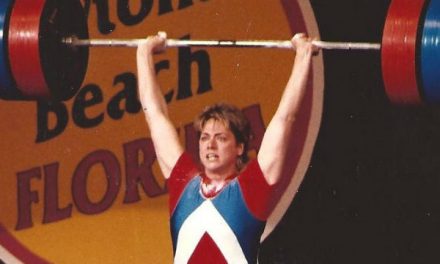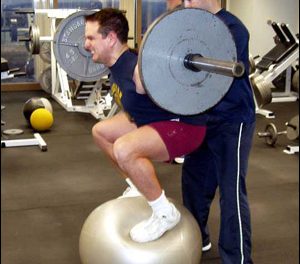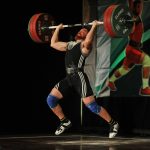by: Adam Sayih

Everyone has their own habits, philosophies and beliefs but if you analyze the cream of the crop, they all have a solid foundation of commonalities. Whether it’s powerlifting, olympic weightlifting, crossfit or strongman, I believe before you start worrying about the little details, a base of strong habits will lead to a successful strength athlete in any domain.
Planning

Successful strength athletes know exactly what they have to do the rest of this week, the next month, the next several months and sometimes even the next year. Although “constantly varied” might sound like a good idea for “WODs,” it’s not ideal for strength progression. This is one reason many strength coaches hate CrossFit. In order to make solid progressions, you need to set up a periodization and plan the way you’re going to attack a goal. Whether the intensity is increasing slowly on a week to week basis or volume increases throughout the week, you need to have a plan. Going into a workout blind, especially on a day to day basis, will lead to frustration and failure.
When you plan any type of strength program you absolutely need the following variables:
-
Volume (Sets x Reps)
-
Intensity (Percentage of 1rm)
-
Rest between sets
-
Deload Periods (Week off, several days off, etc. every couple weeks)
-
Core lifts
-
Assistance Exercise selection
How you organize this is up to you and your creativity. However, there are some guidelines you need to consider:
-
Core lifts first then assistance exercises. By core movements, I’m talking about main lifts, not the all mighty rectus abdominis. For example back squat then glute-ham raises.
-
Fast to slow. Power movements such as cleans or heavy throws should go before slower movements in order to train at optimal power output.
-
Repetition ranges and rest periods need to make sense for the goal.
-
You need to measure progress. This can be done by calculating volume and increasing percentage of 1rm.
This can all seem pretty overwhelming if you’re a beginner. My suggestion is to follow an already successful strength program. This will give you an idea of how all of these variables work before you start experimenting yourself. Here are a few of my recommendations:
Powerlifting: 5/3/1 by Jim Wendler
Cube Method by Brandon Lilly
Westside Barbell by Louis Simmons
Starting Strength by Mark Rippetoe
Weightlifting: Catalyst Athletics by Greg Everett
CrossFit: OPT, Outlaw Way and even the programming I do for 911 CrossFit.
Rest
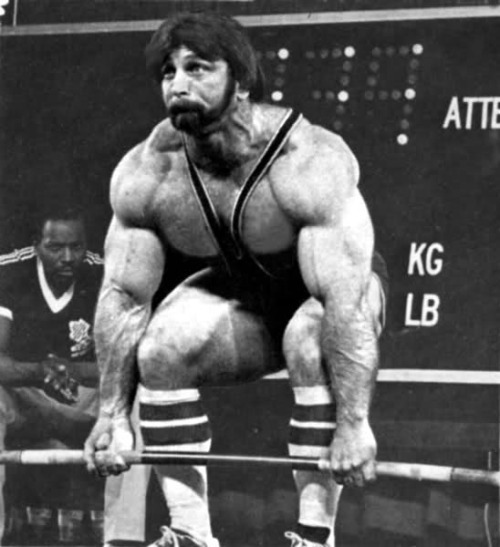
One of the most important and underutilized tools for recovery is rest. Every top athlete is getting 7-9 hours of sleep. You simply can’t have sufficient recovery, hormone regulation and other proper body maintenance systems if you aren’t getting enough rest. In the training section of this website you can read about the benefits of sleep in the article titled “Sleep, Nature’s Healing Remedy.”
Chances are if you’re reading this article you already know how important sleep is, however it’s possible you aren’t able to prioritize the most important tool for recovery. Here’s some tricks to build longer sleep habits:
-
Leave social media for the day time. Studies show that short bits of information such as statuses and tweets will keep you more awake and alert since it’s a burst of multiple batches of information. At night we tend to drift onto other websites and the next thing you know it’s 3am and you’re watching gifs of cats when you could’ve been sleeping the last three hours. Try to knock out your social media addiction during the day that way at night you can settle down and calm the brain for a good nights sleep.
-
Prepare to go to sleep immediately after your last meal. Sometimes we tend to procrastinate getting ready for bed. As soon as you finish your last meal of the day, brush your teeth, take out your contacts, unleash the wrath of a high protein diet in the bathroom and do whatever else it is you have to do to prepare for bed. You’re more likely quicker to hop in bed earlier knowing you can conveniently do so instead of putting off scrubbing down those pearly whites.
-
Read a book. Get a great book and just read the shit out of it before you go to bed. With the amount of stimuli we are exposed to in this fast paced world, it’s a refreshing feeling to get lost in an author’s imagination for half an hour. You’ll notice it’s a lot easier to fall asleep after reading rather than watching TV instead.
Tackling injuries immediately

Injuries suck. They impede progress and well, they hurt. Successful strength athletes understand the frustration of injuries, but they tackle injuries the moment they occur. As athletes you need to think in the long run. Yes, a minor tweak might suck, but you need to tell yourself when to stop. A minor tweak might end up leading to a torn muscle, ligament, etc. Taking a few days off to recover isn’t going to make you weak, it will however solve the issue and lead to a stronger future in your strength career. Take Dwyane Wade for example. He was benched during the playoffs several times for a sore knee, the playoffs. Some people thought it was stupid, but if you want any longevity in any sport you do, you need to heal before you can excel.
Don’t let frustration lead to a dumb mistake by continuing to train hard and ultimately making things worse. Taking three days off is better than three months off due to further injury.
Nearly every issue can be solved with ice and ibuprofen. If something happened mid-workout, throw in the towel. Working out injured doesn’t beef up your man card, it makes you stupid. Go home and immediately ice the area for 10-15 minutes (any longer and reverse effects can occur due to vasoconstriction) and take a recommended dosage of ibuprofen (I can’t legally tell you how much to take so just Google it). The faster you tackle injuries and handle the inflammation, the sooner you’ll be back in the gym. If you really care that much about working out, you’ll handle the situation immediately. This is the successful strength athlete mentality.
Proper Warm-up

Don’t let your ego get in the way of holding an empty barbell.
You need to warm up, period. All successful lifters will take anywhere from 15-30 minutes just to get prepared for the first working set. This is especially important as you get stronger and the weights you move get heavier. The warm-up needs to be done properly and is overlooked all too often.
Goals of a warm-up:
-
Increase body temperature/circulation (particularly the muscles)
-
Increase range of motion
-
Prepare the central nervous system, neural pathways and motor units for heavy loading and contraction
-
Decrease risk of injury
-
Prepare the metabolic systems
Proper preparation will lead to productive gains in strength and technique. In my opinion, the reason most people ignore this is because they don’t know how to conduct a proper warm-up. Doing two arm circles and then going straight to 135lb bench press is pretty much the standard globo-gym warm-up. This is asking for trouble and doesn’t meet any of the warm-up goals. Take some time and do it right.
Here’s a basic guide to warming up for a strength workout:
-
General warm-up: 2-3 Minutes (jumping jacks, rowing erg, stationary bike, etc.)
-
Muscle-specific dynamic warm-up: 3-5 Minutes (butt kicks, high knees, lunges+psoas stretch, inch-worms, etc.). These are performed at light intensity to preserve the ATP-Pc system.
-
Additional mobility work+optional static stretching* 3-5 Minutes (foam roll, lacrosse ball mash)
-
Core movement warm-up** 5+ Minutes. (bench press with barbell, squat with barbell, etc.)
-
Recover metabolic systems 3-5 Minutes (ATP-Pc restoration)
*In my opinion, static stretching is pretty useless during the warm-up because it doesn’t really meet any of the goals of the warm up efficiently. Yes, it increases range of motion but so does dynamic stretching which also increases body temperature and prepares the body on a neural level. However, it should be implemented a bit for specific problem areas. For example if you specifically have tight hips.
**Personally I always start with the barbell and do about 15-20 reps. After, go to 45-55% of 1rm for several reps. That means if you can only bench 160lbs, going straight to “caddy each side brah” means your first warm up set was at 85% of your 1rm, not very smart.
Heres a typical progression for someone doing a strength workout with working sets in the 85-95% of 1rm range:
-
Barbell 15-20 reps. Rest 60-90 seconds.
-
45-55% 8-10 reps. Rest 60-90 seconds.
-
65-70% 4-6 reps. Rest 90-120 seconds.
-
80-83% 1-3 reps. Rest 120-180 seconds.
-
Working Sets (85-95%)
Depending on how strong you are will determine how many warm-up sets you will need. Someone warming up to a 600 pound squat will require more warm-up sets than someone warming up to a 225 pound squat.
Train like a champion
This might sound obvious but there’s more to it than a cheesy saying. In other sports the gym is just a means to an end while scrimmages and drills are considered practice. In strength sports the gym is your practice. The platform is your turf, so in the gym you need to train like it’s the real deal.
The three staples of training like a champion in my opinion are:
-
Explosive warm-ups: when warming up the core lifts, every rep needs to be performed as explosive as possible. Performing repetitions slow only teaches you to be slow and when it comes time to move heavy weight you’ll be slow. “Practice the way you perform,” right? The gym is your practice so always be in the mentality that whatever it is that you do there reflects how you perform when it’s game time. Recently I attended a seminar with Glenn Pendlay and he brought along his athlete and national champion, Travis Cooper. Travis did a demonstration for us and ended up doing a 330 pound snatch and a 405 pound clean and jerk. The craziest part is that his 135 pound snatch and 135 clean and jerk looked exactly like his 330/405 lift. Create habits early on and teach the body to be aggressive and explosive at all times.
-
Visualization: picture yourself doing the lift. If you can’t mentally see yourself doing the lift your confidence will be crushed the moment you unload the bar.
-
Perform your ritual every set: YouTube a bunch of successful lifters and you’ll notice a pattern. They all perform a ritual before the lift and they consistently do so every-freakin-time. Does this mean bring your mayan bracelet and do the dougie before every lift? No. You have to repeat over and over and over again approaching the barbell the same exact way. Have the same stare into oblivion and ignite the fire in your chest. Engage in visual warfare with a barbell that just wants to prove how much you suck at fighting gravity.
Being a successful strength athlete means you need to create habits. Strong habits lead to strong lifts which leads to a successful lifting career. You want to be at the top? Train like you’re already at the top. You want to add 100 pounds to your total by next year? Plan for it, then attack your strategy. Success in anything requires determination, consistency and patience along the way. Plan, prepare, attack and be ready to climb higher and higher on the podium.
Sources:
Coburn, Jared W., and Moh H. Malek. NSCA’s Essentials of Personal Training. Champaign, IL: Human Kinetics, 2012. 347-88. Print.
Everett, Greg. Olympic Weightlifting: A Complete Guide for Athletes & Coaches. [Calif.]: Catalyst Athletics, 2009. 31-39. Print.
“Low on Sleep? Stop Computing before Bed – The Week.” The Week. N.p., n.d. Web. 08 Aug. 2013.
